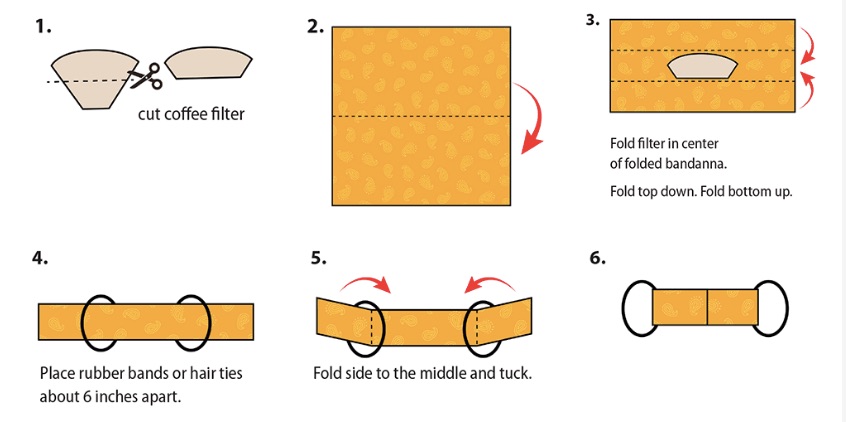Here’s How to Make a Face Mask, No Sewing Required


Following the CDC’s updated face-covering recommendation last week, there was a surge in homemade mask production. My Instagram feed alone has become a stream of artfully masked selfies. But what should you do if you can’t sew at all, or lack the supplies where you are?
First, about that CDC recommendation. Because new studies show that the coronavirus can be transmitted by individuals who are asymptomatic and presymptomatic—meaning you could spread the virus to others but feel fine yourself at the time—DIY cloth masks and face coverings are now advisable to wear for everyone. (n95 and surgical masks are still badly needed for medical staff.)
Covering up is doubly important in hotspots like my native New York City: “CDC recommends wearing cloth face coverings in public settings where other social distancing measures are difficult to maintain (e.g., grocery stores and pharmacies) especially in areas of significant community-based transmission.” These measures are meant to protect yourself from the virus as well as to protect others if you may be infected yourself.
Since a face mask that more closely fits is said to offer better protection than a wrapped scarf, I was glad to see a simple and effective tutorial where no sewing was needed taking off on Twitter. This one uses a bandana, but if you don’t happen to have a bandana lying around, you can cut some fabric to bandana-size in order to follow the same method here. It’s probably a better idea to use alternative fabric anyway—thicker fabrics with higher thread counts are best (more on this in a minute).
The average bandana sizes in inches are as follows: “27×27 (oversized), 22×22 (standard), 18×18 (child size), 14×14 (hankie size).” If you’re cutting to a standard bandana size, you want the measurements to be 22 inches square, or 56cm x 56cm. This video originally came from the Instagram account julie_eigenmann:
NO SEW MASK! 😷💗😷💗 Please share with your friends ! pic.twitter.com/ThUh1lKfNt
— Constance Jones (@Constance8News) April 3, 2020
Bandanas, while popular and used in many tutorials, are actually not the most ideal face mask material. So keep that in mind with this particular tutorial—other fabrics cut to bandana size can use this method, which doesn’t necessitate a stitch of sewing. You will need a couple of hair ties or other elastic loops on hand. Even I, a very non-crafty person, feel as though I can pull off this miraculous folding.
From Yahoo’s article “These DIY Face Mask Materials Are Best, According to Scientists,” we learn that certain materials are better for homemade face masks than others. Best to use would be quilters’ cotton with a thread count of at least 180, flannels, or high thread-count fabric such as you’d find in well-made sheets; they recommend a 600-count pillowcase to chop up, which aren’t too expensive to order online if you need one. A cotton t-shirt also works if options are limited.
With fabric, you want the weave to be as tight as possible to prevent particles from entering and exiting. In a pinch, hold you mask fabric up to the light: “If light passes really easily through the fibers and you can almost see the fibers, it’s not a good fabric. If it’s a denser weave of thicker material and light doesn’t pass through it as much, that’s the material you want to use.”
Many “homebrew” mask instructions also suggest that you layer a coffee filter behind the fabric or folded within it. These can be easily changed when the mask is washed and they add another layer of protection. For an easy visual on how to do this, check out this step-by-step pictorial guide on CNN, or follow the CDC’s range of instructions on sew and no-sew options.

(CDC)
It’s important to remember that while homemade cloth masks are strongly recommended if you must go outside on essential business or for socially-distanced exercise, they shouldn’t give people a sense of false security. The absolute best protection we can have and the best way to contribute to this crisis as regular civilians is to stay inside as much as we can and stop the spread of COVID-19.
Have you been making masks? Have any tips or tricks or tutorials you followed? Let us know in the comments.
(images: Wikimedia Commons, CDC)
Want more stories like this? Become a subscriber and support the site!
—The Mary Sue has a strict comment policy that forbids, but is not limited to, personal insults toward anyone, hate speech, and trolling.—
Have a tip we should know? [email protected]
